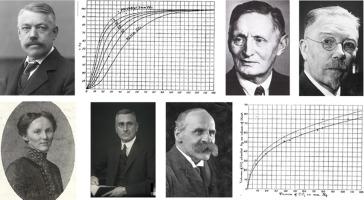Comparative Biochemistry and Physiology A: Molecular & Integrative Physiology ( IF 2.1 ) Pub Date : 2020-12-20 , DOI: 10.1016/j.cbpa.2020.110880 Hans Malte 1 , Gunnar Lykkeboe 1 , Tobias Wang 1

|
For the past century, the importance of the Bohr effect for blood oxygen delivery has been deemed secondary to the influence of the uptake of carbon dioxide when the blood is deoxygenated (the Haldane effect). This is, however, not the case. The simultaneous oxygen and proton binding to hemoglobin can be modelled by a two-ligand, two-state formulation, while the resulting changes in acid-base status of the surrounding solution can be assessed according to Stewart's model for strong ion difference. This approach shows that an abolishment of the Bohr effect (by either equalizing pKa values of the Bohr groups of T and R states, or by removing the Bohr groups in the calculations) dramatically increases oxygen affinity, and that the Bohr effect plays a crucial role in determining the overall position and shape of the oxygen equilibrium curve. Thus, the magnitude of the Bohr effect (the Bohr factor) and oxygen affinity are directly related, and any change in hemoglobin structure that affects the Bohr factor will inevitably influence hemoglobin oxygen affinity. The modelling approach also emphasizes that pH, PCO2 and PO2 in capillaries are dependent variables, determined by arterial blood gases, the Bohr effect, the respiratory quotient (RQ) of tissue metabolism and the buffer capacity of blood. Thus, the full extent of the Bohr effect cannot be appreciated by comparing oxygen equilibrium curves made at constant PCO2 or pH, but only by comparing curves at constant proton saturation of the Bohr groups. This is because, it is the protons bound to the Bohr groups that directly influence hemoglobin‑oxygen binding.
中文翻译:

玻尔效应的大小深刻影响血氧平衡曲线的形状和位置
在过去的一个世纪里,玻尔效应对血氧输送的重要性被认为次要于血液脱氧时二氧化碳吸收的影响(霍尔丹效应)。然而,事实并非如此。氧和质子与血红蛋白的同时结合可以通过双配体、两种状态的公式进行建模,而周围溶液酸碱状态的结果变化可以根据 Stewart 的强离子差异模型进行评估。这种方法表明玻尔效应的消除(通过均衡 T 和 R 态玻尔基团的 pKa 值,或通过在计算中去除玻尔基团)显着增加氧亲和力,并且玻尔效应起着至关重要的作用确定氧平衡曲线的整体位置和形状。因此,玻尔效应(玻尔因子)的大小与氧亲和力直接相关,任何影响玻尔因子的血红蛋白结构变化都必然会影响血红蛋白的氧亲和力。建模方法还强调 pH、PCO毛细血管中的2和 PO 2是因变量,由动脉血气、玻尔效应、组织代谢的呼吸商 (RQ) 和血液的缓冲能力决定。因此,不能通过比较在恒定 PCO 2或 pH 下制作的氧平衡曲线来了解玻尔效应的全部范围,而只能通过比较在玻尔基团的恒定质子饱和度下的曲线。这是因为,与玻尔基团结合的质子直接影响血红蛋白与氧的结合。











































 京公网安备 11010802027423号
京公网安备 11010802027423号